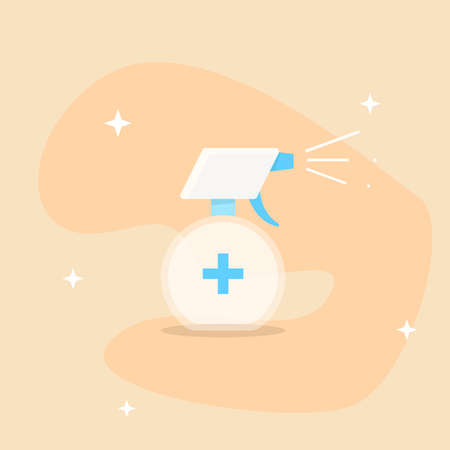1. Understanding Basic First Aid for Babies
As a new parent, understanding basic first aid for your baby is crucial. Accidents and emergencies can happen anytime, and knowing how to respond quickly can make all the difference. In this section, we’ll cover essential infant first aid principles, how to assess an emergency, and when to seek professional medical help.
Recognizing an Emergency
The first step in providing first aid is recognizing when your baby needs immediate medical attention. Some common signs of an emergency include:
| Signs of an Emergency | What to Do |
|---|---|
| Difficulty breathing or turning blue | Call 911 immediately and begin infant CPR if necessary. |
| Unconsciousness or unresponsiveness | Check for breathing and pulse; call 911 right away. |
| Severe bleeding that doesn’t stop with pressure | Apply firm pressure with a clean cloth and seek medical help. |
| A seizure lasting more than 5 minutes | Keep baby safe, lay them on their side, and call 911. |
| Persistent vomiting or signs of dehydration | If baby isn’t keeping fluids down or seems lethargic, contact a doctor. |
The Importance of Staying Calm
Panic can make emergencies worse. Take a deep breath and focus on what needs to be done. If youre unsure about the severity of the situation, its always best to err on the side of caution and seek medical advice.
When to Seek Professional Medical Help
If you’re ever uncertain about your baby’s condition, don’t hesitate to call your pediatrician or 911. Here are some situations where professional help is necessary:
- Your baby has trouble breathing or makes wheezing sounds.
- You suspect poisoning (call Poison Control at 1-800-222-1222).
- Your baby experiences a head injury followed by vomiting or drowsiness.
- A high fever (100.4°F or higher in infants under three months) that doesn’t go down.
- A rash that spreads rapidly or comes with fever.
Your Role as a Parent
No one expects you to be a medical expert, but having basic first aid knowledge can be lifesaving. Consider taking an infant CPR class and keeping a well-stocked first aid kit at home. Being prepared will give you confidence in handling unexpected situations.
2. Infant CPR and Choking Response
As a new parent, knowing how to perform CPR and respond to choking emergencies can be lifesaving. Babies explore the world with their mouths, which makes choking a common hazard. Understanding the right steps to take in an emergency can make all the difference.
How to Perform Infant CPR
If your baby is unresponsive and not breathing, follow these steps for infant CPR:
Step-by-Step Guide for Infant CPR
| Step | Description |
|---|---|
| 1. Check Responsiveness | Gently tap your babys foot and call their name. If there is no response, proceed to the next step. |
| 2. Call for Help | If you are alone, perform two minutes of CPR before calling 911. If someone else is with you, have them call 911 immediately. |
| 3. Open the Airway | Place your baby on a firm surface. Tilt their head slightly back by lifting the chin. |
| 4. Give Rescue Breaths | Cover your baby’s nose and mouth with your mouth, then give two gentle breaths, each lasting about one second. Watch for chest rise. |
| 5. Begin Chest Compressions | Use two fingers in the center of the chest (just below the nipple line). Press down about 1.5 inches deep at a rate of 100-120 compressions per minute. |
| 6. Continue CPR | Perform 30 chest compressions followed by two rescue breaths. Repeat until help arrives or your baby starts breathing. |
How to Respond If Your Baby Is Choking
If your baby is choking but still coughing or making sounds, encourage them to cough it out. However, if they are silent, turning blue, or unable to breathe, take immediate action.
Step-by-Step Guide for Choking Response
| Step | Description |
|---|---|
| 1. Assess the Situation | If your baby cannot cough, cry, or breathe, they need immediate help. |
| 2. Give Back Blows | Sit down and hold your baby face-down along your forearm, supporting their head and neck. Use the heel of your hand to deliver five firm back blows between their shoulder blades. |
| 3. Perform Chest Thrusts | If the object is still lodged, turn your baby face-up while keeping their head lower than their chest. Use two fingers to give five quick thrusts in the center of their chest. |
| 4. Repeat Until Clear | Continue alternating between five back blows and five chest thrusts until the object is dislodged or emergency help arrives. |
| 5. Call 911 If Necessary | If your baby becomes unresponsive, start CPR immediately and call 911. |

3. Treating Common Baby Injuries
Babies are naturally curious and active, which means occasional bumps, bruises, and minor injuries are inevitable. Knowing how to handle these common incidents quickly and effectively can help keep your baby safe and comfortable. Below are practical ways to treat everyday injuries such as cuts, burns, bumps, and bruises.
Cuts and Scrapes
Minor cuts and scrapes are common as babies explore their surroundings. Heres what you should do:
- Clean the wound: Rinse with warm water and gently wash with mild soap.
- Stop the bleeding: Apply gentle pressure with a clean cloth or sterile gauze.
- Apply an antiseptic: Use a baby-safe antiseptic to prevent infection.
- Cover if needed: Use a small bandage for protection, but remove it once the wound starts healing.
Burns
If your baby experiences a minor burn, follow these steps:
- Cool the area: Run cool (not cold) water over the burn for 10-15 minutes.
- Avoid ice or butter: These can worsen the burn.
- Apply a soothing gel: Aloe vera or a baby-safe burn ointment can help relieve discomfort.
- Cover loosely: Use a sterile, non-stick bandage if necessary.
Bumps and Bruises
Bumps and bruises are part of growing up. Here’s how to handle them:
- Apply a cold compress: Use a soft cloth wrapped around an ice pack for 10-15 minutes.
- Soothe your baby: Comfort them with cuddles and gentle words.
- Monitor for signs of serious injury: If your baby becomes drowsy, vomits, or acts unusually after a head bump, seek medical attention immediately.
Treatment Quick Reference Table
| Injury Type | First Aid Steps |
|---|---|
| Cuts & Scrapes | Clean with water & soap → Apply gentle pressure → Use antiseptic → Cover if needed |
| Burns | Cool under running water → Avoid ice/butter → Apply soothing gel → Cover loosely |
| Bumps & Bruises | Cold compress → Comfort baby → Monitor for unusual symptoms |
When to Seek Medical Attention
If any injury seems severe or your baby is not acting normally after an accident, contact your pediatrician immediately. Its always better to be cautious when it comes to your babys health and safety.
4. Managing Fevers and Illnesses
As a new parent, dealing with your babys fever or illness can be stressful. Knowing how to recognize concerning symptoms, safely reduce fever, and determine when to seek medical care can help you stay calm and take the right steps.
How to Recognize Concerning Symptoms
Fevers are common in babies and usually indicate that their body is fighting an infection. However, some symptoms require immediate attention. Look out for these warning signs:
| Symptom | When to Be Concerned |
|---|---|
| Fever above 100.4°F (38°C) in infants under 3 months | Call your doctor immediately |
| Persistent fever over 102°F (38.9°C) in older babies | Monitor closely and consult a doctor if it lasts more than 24 hours |
| Difficulty breathing or wheezing | Seek emergency care |
| Lethargy or difficulty waking up | Call your pediatrician immediately |
| Refusal to eat or drink | Monitor for dehydration and contact a doctor if persistent |
| Seizures | Seek emergency medical help |
How to Reduce Fever Safely
If your baby has a mild fever but is otherwise alert and hydrated, you can try these methods to bring the temperature down:
- Dressing lightly: Avoid overdressing or bundling your baby too much.
- Lukewarm bath: A lukewarm (not cold) bath can help cool them down.
- Adequate hydration: Offer breast milk, formula, or small amounts of water (if age-appropriate).
- Pediatrician-approved medication: If recommended by your doctor, use infant acetaminophen or ibuprofen (for babies over 6 months).
When to See a Doctor
If youre unsure whether your babys condition is serious, its always best to check with your pediatrician. Call your doctor if:
- Your baby is under 3 months old and has any fever.
- The fever lasts longer than 24 hours in babies under 2 years old.
- Your baby shows signs of dehydration (dry mouth, no tears when crying, fewer wet diapers).
- The fever is accompanied by a rash, vomiting, or diarrhea.
- Your baby seems unusually irritable or inconsolable.
5. Creating a Baby First Aid Kit
As a new parent, having a well-stocked baby first aid kit is essential for handling minor injuries and health concerns quickly and effectively. A properly prepared kit ensures that you have the necessary supplies at hand when your little one needs care. Below is a checklist of must-have items for an infant first aid kit, along with guidance on how to use each item.
Essential Items for Your Baby First Aid Kit
| Item | Purpose |
|---|---|
| Digital Thermometer | To accurately measure your babys temperature if they show signs of fever. |
| Nasal Aspirator | Helps clear mucus from your babys nose, making it easier for them to breathe. |
| Infant Acetaminophen (Tylenol) | Pain and fever relief; consult your pediatrician for correct dosage before use. |
| Bandaids & Sterile Gauze | Covers small cuts or scrapes to prevent infection. |
| Antiseptic Wipes | Cleans minor wounds before applying bandages. |
| Tweezers | Aids in removing splinters or other small foreign objects from the skin. |
| Nail Clippers & Emery Board | Keeps babys nails trimmed to prevent accidental scratches. |
| Cotton Balls & Cotton Swabs | Cleans delicate areas such as around the umbilical cord or ears. |
| Baby-Safe Saline Drops | Makes nasal congestion easier to manage by loosening mucus. |
| Aloe Vera Gel | Soothe mild skin irritations, like sunburns or rashes. |
Tips for Organizing Your Baby’s First Aid Kit
- Use a Waterproof Container: Store all items in a waterproof, easy-to-carry container to keep supplies clean and protected.
- Label Everything: Clearly label each item so you can find what you need quickly in an emergency.
- Add Emergency Contact Information: Include your pediatrician’s phone number and local emergency services contact details inside the kit.
- Check Expiration Dates Regularly: Medications and ointments expire, so review and replace any outdated items as needed.
- Keeps It Accessible but Safe: Store the kit in an easily accessible spot for adults but out of reach of children.
How to Use Key Items in Your Babys First Aid Kit
Treating Fevers with a Digital Thermometer
If your baby feels warm, use a digital thermometer to check their temperature. For infants under three months, a rectal reading provides the most accurate results. If the temperature is over 100.4°F (38°C), call your pediatrician immediately.
Caring for Minor Cuts and Scrapes
If your baby gets a small cut or scrape, gently clean the area with antiseptic wipes. Apply sterile gauze or a bandaid to protect the wound from dirt and bacteria.
Easing Nasal Congestion with Saline Drops & Aspirator
If your baby has a stuffy nose, place one or two drops of saline solution into their nostrils. Wait a few moments before using a nasal aspirator to remove loosened mucus gently.
A well-prepared first aid kit gives you peace of mind, knowing that youre ready to handle common health concerns quickly. Keeping these essential items organized and updated will help you respond confidently to your babys minor medical needs.


